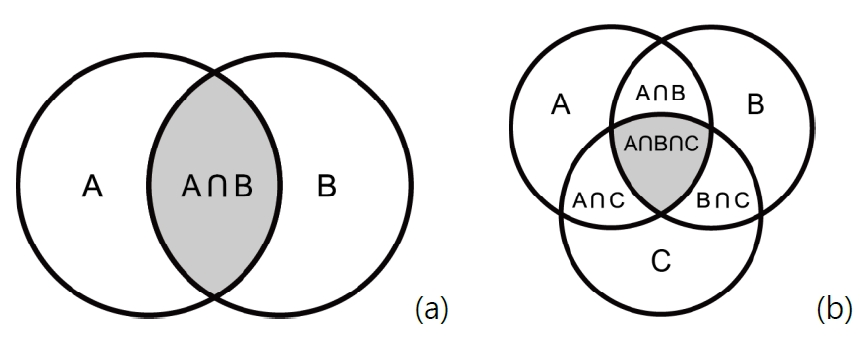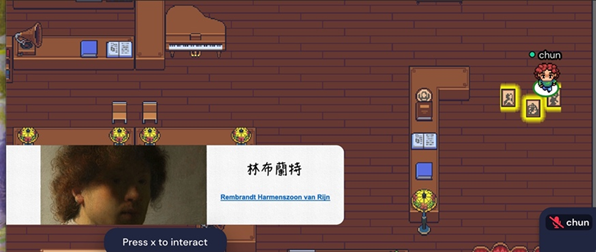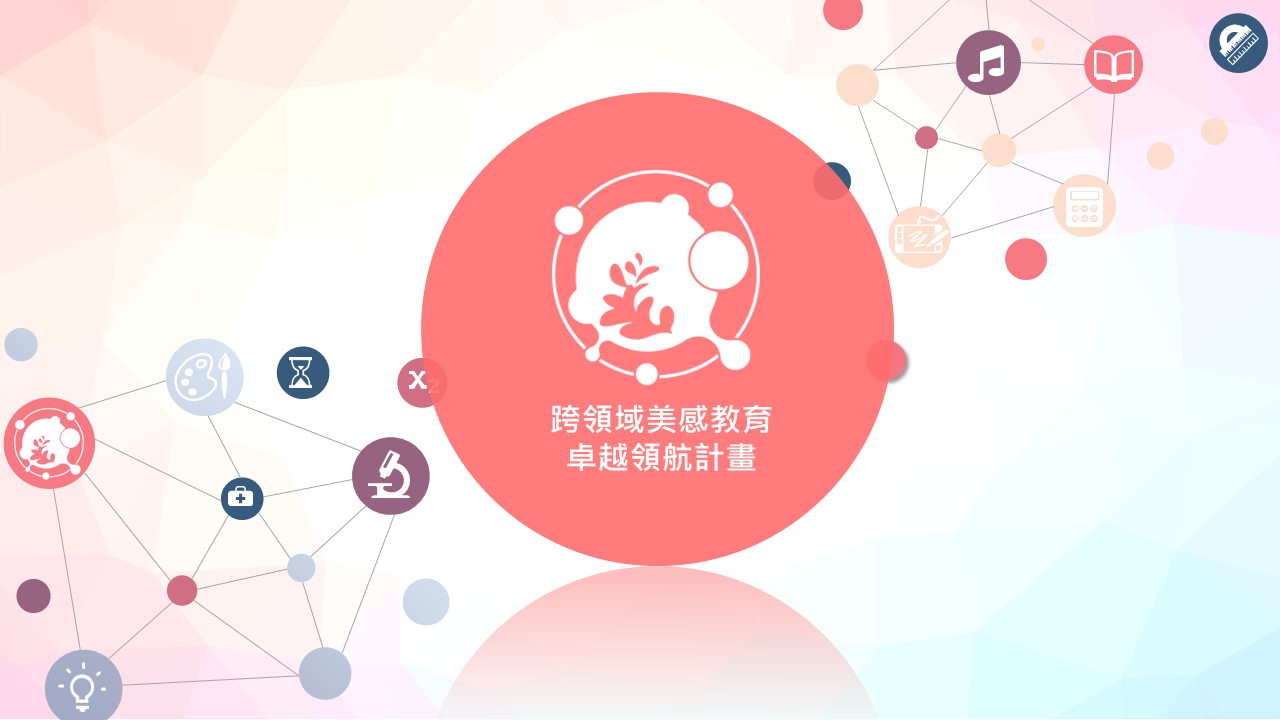Union or intersection: a reflection on cross-field aesthetic education
Assistant Professor Chen Junwen, Institute of Arts and Humanities Education, National Taipei University of the Arts
In recent years, I have observed excellent cross-field aesthetic education practice sites and programs, and I can’t help but wonder why seemingly simple teaching techniques have good learning results. After thinking about it, I found that successful cases can usually find common concepts between cooperation fields, and can be carried out with teaching activities that have simple and clear concepts and are easy to operate and experience. For example, the cross-domain courses of Banqiao Zhongshan Elementary School teacher Liu Meiling and Principal Chen Xuetian want to integrate the local history and culture of Fuzhou community, visual arts, natural science and technology and other fields. They found the core elements of microscopic visual form and cleverly used the tablet computer mobile microscope. A tool for designing integrated teaching activities. The teacher guided by the popular animated clothing to observe the color, shape, texture, feeling, and homophonic aesthetic elements of the fabric under the microscope, and asked the children to observe daily banknotes and meaningful old things brought from home, and discovered that they usually turn a blind eye details and beauty, while sharing the old stories of the elders, leaving a very profound experience. Finally, I went on to observe the historical relics from the local Lin Family Garden in Banqiao, and discovered that the beauty of local history and culture can be so connected with my own life experience. Such courses master common core concepts and develop multi-level cross-field learning. From simple and clear teaching activities, students can fully experience their feelings and achieve diverse learning results.
Cross-cutting meaning
This reminds me that when conducting cross-field teaching design, since subjects in each field have teaching progress, we will want to provide a combination of teaching materials in various fields. It has a variety of content and is easy to create rich content. There are many diversified teaching materials, but they may just juxtapose various fields together, and students may not necessarily be able to grasp the spirit and necessity of cross-fields. The problem is that we usually find points of cross-field integration. For some fields, it may only be a superficial correlation rather than a core concept or ability. Therefore, there may be problems with the theme focusing on certain fields.
Especially in the context of cross-field aesthetic education, art is very useful for cross-field teaching. Generally speaking, the way to conduct art-related cross-field teaching may be to use art to activate teaching in other subject areas, or to use subject area knowledge as a teaching creation in the art field. Depending on the subject matter and content, these methods will inevitably differ between masters and slaves in the field. For example, the theme is to develop a technology application and only use visual art techniques to design the shape or appearance of the finished product; or for the purpose of artistic presentation, some easy-to-use surface forms of media technology are used, but there is no explanation why they are used. These situations lack the early collaborative development and close communication of cross-disciplinary teams, unable to deeply explore the connotation of disciplines and art, and thus lack original integrated applications.
Therefore, in order to overcome the above problems, we can think about whether our teaching topics have found the core concepts of cross-fields, that is, the intersections of cross-fields. We should also see if we may feel that many contents are related for a while. Unknowingly, too many topics that are not directly related to the core concepts are introduced, and it becomes a cross-field connection. It is easy for students to lose their way due to the lack of a clear structure.
Intersection and union are very basic concepts in mathematical set theory. The intersection of set A and set B is the set of elements that appear in both sets A and B. The union of set A and set B is the set of elements that are at least in set A or set B. The set of elements in which one of B appears. If there are three or more sets, the intersection is also a set of elements that appear in all sets at the same time. The union is a set of elements that appear in at least one of the sets, but it can be noted that there are some intersections between individual sets. is not included in the overall intersection.
When we study mathematics, we should find that the concept of sets is easy to understand and there is no problem in solving problems. But when we talk about two or more topics in life or work, we may not pay much attention to whether we are talking about a connection or an intersection. For example, when "technological art" became an art form very early, it was called "art and technology" abroad (Poltronieri, Candy, & Edmonds, 2018). Usually when two Chinese words are compounded When they are put together, we will think that the former should be used as an adjective to modify the latter. Therefore, technological art may refer to a kind of art, an art created using technological media tools, which conforms to the general characteristics of referring to art. But why didn’t the original text use technical art? I think such wording can go straight to the core of the concept, and can also allow the exploration of unknown areas and interactive possibilities. At the intersection of the two, we think about the common concepts, forms and issues of art and technology. After finding the core of the concept to be expressed, we can then have corresponding art forms and technology applications to form an integrated creation. In order to explore a wider range of possibilities, we will look for some interesting concepts where the two are connected, that is, where there seems to be no direct correlation, and then think about the relationship and connection between the two, but we are still looking for the unknown The intersection of art and technology should not be intended to cover everything.
The combination of multiple fields of STEAM (Science, Technology, Engineering, Art, Mathematics) education can also be used to illustrate cross-field concepts. From the original STEM emphasis on division of labor (interdisciplinary), to STEM+A art and individual cooperation in various scientific and technological fields (multidisciplinary), to the cross-disciplinary integration (transdisciplinary) of STEAM integrating technology and artistic spiritual connotations, it is not just about abstraction. The form of art, but emphasizes the nature of artistic creativity and innovation. The cross-field integration of STEAM education is naturally not about binding the textbooks of various subjects together (union), but about finding the interoperable spirit and concepts (intersection), and then understanding the knowledge from various aspects, and then understanding the knowledge in various fields. to solve common problems.
Curriculum design for cross-field aesthetic education
Taking the cross-field course "New Media Art Education" that I am conducting as an example, it can also be understood in many ways. It may be education in "new media art" or art education using new media. Considering the characteristics and needs of the art teaching and teacher training students of Beijing University of Arts and Sciences, "new media art" is an art field that is currently in the ascendant. It itself has high cross-field characteristics. Its artistry and form will play an important role in future teaching. The design can be integrated and used, and students have high motivation to learn; on the other hand, the use of new media as teaching media and tools for art education is already a widely used method in the teaching field, which can improve the students' Interests can also meet the efficiency and systematization needs of the information age. This course is closer to the former in design, but it does not develop professional education in new media art. Instead, it hopes to bring the cross-disciplinary artistic creation spirit of new media art into the field of educational innovation. Therefore, the focus of the course is not on various media technologies. Instead of learning, it is about understanding the spiritual connotations of various fields in the creative experience of new media art, and then developing cross-field integration capabilities and teaching methods.
Since the focus of this course is on the cross-field characteristics of new media art, we adopt the concepts and methods of STEAM cross-field education as the basic positioning of the course design, and try to integrate the spiritual connotation of science and technology into art education. The course design is based on the spirit of Resnick (2017) in developing the Scratch programming platform in the Life-long Kindergarten laboratory, and uses the "4P methodology", that is, Project, Passion, Peer, and Play, as the guideline , planning what and how students experience and learn. Through group peer cooperation projects, in the process of trying to have fun with multiple parties, you can discover and solve problems, find your true passion, and achieve better learning results. This is a method that we believe can be extended to various educational sites. During the teacher training process, courses should also use this method to allow learners to experience it.
Therefore, this "New Media Art Education" course starts with the introduction and application experience of new media types, explores the problems in the creation and understanding process of students in the educational field, and then thinks about new media from the basic characteristics of new media and new media art. Through the process of teaching and self-learning, we try to propose a cross-field education plan for new media art in the form of group cooperation projects. In terms of course design, we do not start with the basic theories of related fields, but advance to the context of new media creation and application. We use group cooperation to try to master basic technologies and develop creative concepts in a short period of time, including digital audio and video, animation, Digital manufacturing, augmented reality and interactive media, etc.; on the one hand, we understand the feelings of ordinary students in the school who are new to the school, and on the other hand, we think about how to guide students to operate, learn and create. After the experience of new media creation, the most important thing is the in-depth reflection and discussion by the whole class, especially how to overcome the learning obstacles of new media, how to guide ordinary students to integrate technology and art, and understand the meaning and necessity of artistic expression, new How to work as a team in media creation, how to be creative, how to generate enthusiasm, and more.
After having the initial experience and reflection and discussion of various new media arts, we need to enter the teaching site. The teachers at the teaching site will help us understand how new media is applied to art education, and whether the cross-field concepts of new media art can be extended to teaching; For example, this semester (109-2) arranged a visit to a toy bank. Through teacher Zheng Hongqi’s toy dismantling workshop, we discussed the curriculum design of toys as a medium that combines technology and art. This provides further practical experience to trigger more Much reflection. After gaining direct experience of new media (and) art, we returned to books and thought about what new media and new media art are, and what attempts have been made by artists, engineers and scholars in the past. In addition to documenting in the classroom In addition to reading discussions, experts and scholars are also invited to share their expertise and provide more insightful knowledge. For example, this semester, teacher Qiu Zhiyong was invited to discuss the typology of new media art and its current development status, from types to cross-field concepts. After understanding the nature and application of new media, we further discussed the cross-field characteristics of new media art. We took STEAM education and the Maker movement as practical directions in art education. Read the discussion to understand its basic concepts, development process and practical promotion. methods, and invite experts and scholars to share practical experience. This semester, teacher Chen Chundi was invited to propose the imaginary possibilities and actual current situation of STEAM education from a very insightful point of view.
This course takes STEAM cross-field education as the core concept and uses group teamwork projects as an important process of practical learning and learning effectiveness evaluation. Each group must cooperate to complete an executable new media art education teaching plan and actually try it out with each other. Teaching, interactively playing the roles of teacher and learner. The development process of the teaching plan adopts the design thinking method often used in problem-based learning (PBL). The observation and ideation processes need to go through multiple diffusion and convergence processes. The focus is on sufficient multi-party observation and ideation. and precise insight discovery, problem definition and solution selection.
Due to the epidemic this semester, the design and execution of the semester teaching plan has been changed to online. During the observation and problem definition stages, an online whiteboard (Google Jamboard) was used to extensively collect concepts and ideas. A group of graduate students focused on tourism, space, and exploration. , light, color and other themes, the development converged into two themes: "Traveling the World with Art" and "Exploring Space at Home", and taking into account the needs of online learning, the structure of the "Painting of Famous Paintings" course was integrated. The course content uses light treatment in the works of Dutch painter Rembrandt as the main axis. It uses the Google Arts & Culture app to combine visual arts and photography to allow students to understand the relationship between paintings and light. It is then designed into an online exhibition mode using Gather Town to participate. Participants choose the paintings they want to learn, then leave the computer to find a suitable space at home, use lighting to imitate Rembrandt's characteristic light works, and finally upload them to the exhibition to share their personal creations and experiences. This lesson plan masters a core concept: Rembrandt's light, and uses app interaction, teaching material sharing, online exhibition viewing, home overcoming difficulties to create, and online display of personal works to experience the same theme from different angles and enhance learning effectiveness. . It was also observed here that the development process of this group of teaching plans and the open discussion of the group are very consistent with the creative learning spiral proposed by Resnick (2017), that is, imagination > creation > play > sharing > thinking > imagination, a cycle process that starts over and over again. .
I believe that meaningful cross-field course design should have common core concepts and an experience process that can run through the common concepts. For example, in the 109th school year, teacher Wang Yanzhao and his team at New Taipei City Fuxing Elementary School’s “It’s That Light” course uses the common concepts of light and shadow and integrates visual arts, natural sciences, mathematical geometry and other fields. Various fields include solar observation, campus The symmetrical forms of animals, geometric pattern designs, paper-cut hollow patterns, paper-cut public art and other perspectives and techniques are used to jointly complete large-scale paper-cut public art installations. Paper-cutting is an experience process that can run through common concepts, providing a multi-level cross-field study.
The "Let's Have an Animal Party" course by teacher Lin Jiamei and her team from Fuxing Junior High School in Yilan County uses the common concepts of eliminating oppression and friendly interaction, integrating visual arts, performing arts, reading and other fields. The course design is based on "Animal Farm" 》The novel story is the basis of experience that runs through common concepts, and various aspects of the story are explored from various fields. In the performing arts course, we watch the adapted drama performance of "Animal Party" and read the script to understand the meaning of the transmission; in the reading course, we discuss the dilemmas and problems of the characters in the play; in the visual art course, we use various media to express scene reproduction and think about storyboarding and production Miniature scene. Story scene production is an experiential process that runs through common concepts, integrates the connotations of various fields, synthesizes various media materials, and can be applied to subsequent storytelling and film shooting.
There is also the "School on the Hill - Picnic" course taught by Teacher Lin Ziwei and her team from Daguan Elementary School in New Taipei City. The main common concept is to use the mountain forest as the object of a feast for the body, mind and soul. It integrates visual arts, music, reading, nature and information. , special education and other fields, to understand the mountains and forests, appreciate natural music, discuss the visual artistic expression of banquets, and then prepare ingredients and make tableware, to design and host a complete picnic by yourself. The picnic is an experience process that runs through common concepts, allowing students to fully understand and appreciate the rich diversity and aesthetic experience of the mountain and forest environment around the school, and how humans enjoy the feast of nature.
Cross-domain aesthetic cooperative teaching is not a simple task and involves a lot of communication and coordination. In solving many detailed problems, it is easy to lose the main direction, so that students may not know why they are learning when the course is implemented. A simple way to check is to ask yourself whether the cross-domain work you are doing is a union or an intersection. If you deviate too much from the common core concepts and find it difficult to leave your beloved domain knowledge, you may drift to nowhere in the sea of connections. The simpler way is to find an experience process that runs through common concepts. All teaching revolves around this main experience process, so it is not easy to deviate too far from the common core concepts. In addition, if it is sometimes difficult to coordinate a common core concept, you can raise the level of abstraction to think about the meaning of the teaching content. You can also find special meaning connections for seemingly unrelated topics.
In short, it is a useful strategy in cross-field cooperation to clearly understand whether we are joining forces or intersecting.





